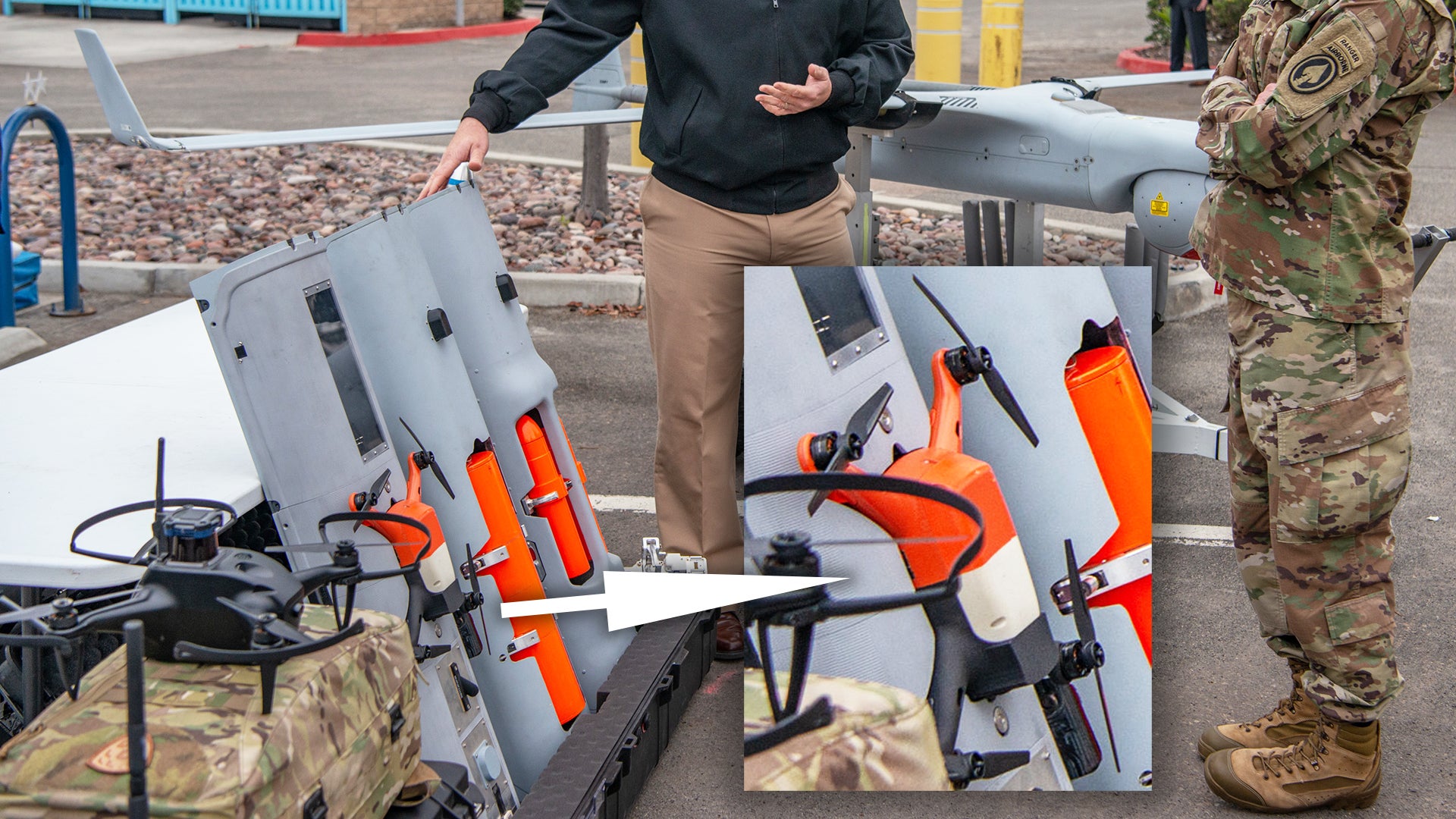The U.S. Navy has released a picture that shows a payload module for the Boeing Insitu RQ-21 Blackjack unmanned aircraft that appears to give it the ability to deploy a smaller quadcopter-type drone in flight. This module was seen displayed next to others that are clearly designed to hold small munitions or other expendable payloads.
U.S. Army Gen. Richard Clarke, head of U.S. Special Operations Command (SOCOM), was showing these payload options for the RQ-21, among other things, during a visit to the Naval Special Warfare Command (NSWC) headquarters in San Diego, California, earlier this month. NSWC oversees the Navy’s elite SEAL teams, as well as other naval special operations units. The captions attached to the pictures of Clarke’s visit that show the Blackjack misidentify it as a ScanEagle drone, a smaller and distinctly different Boeing Insitu design.
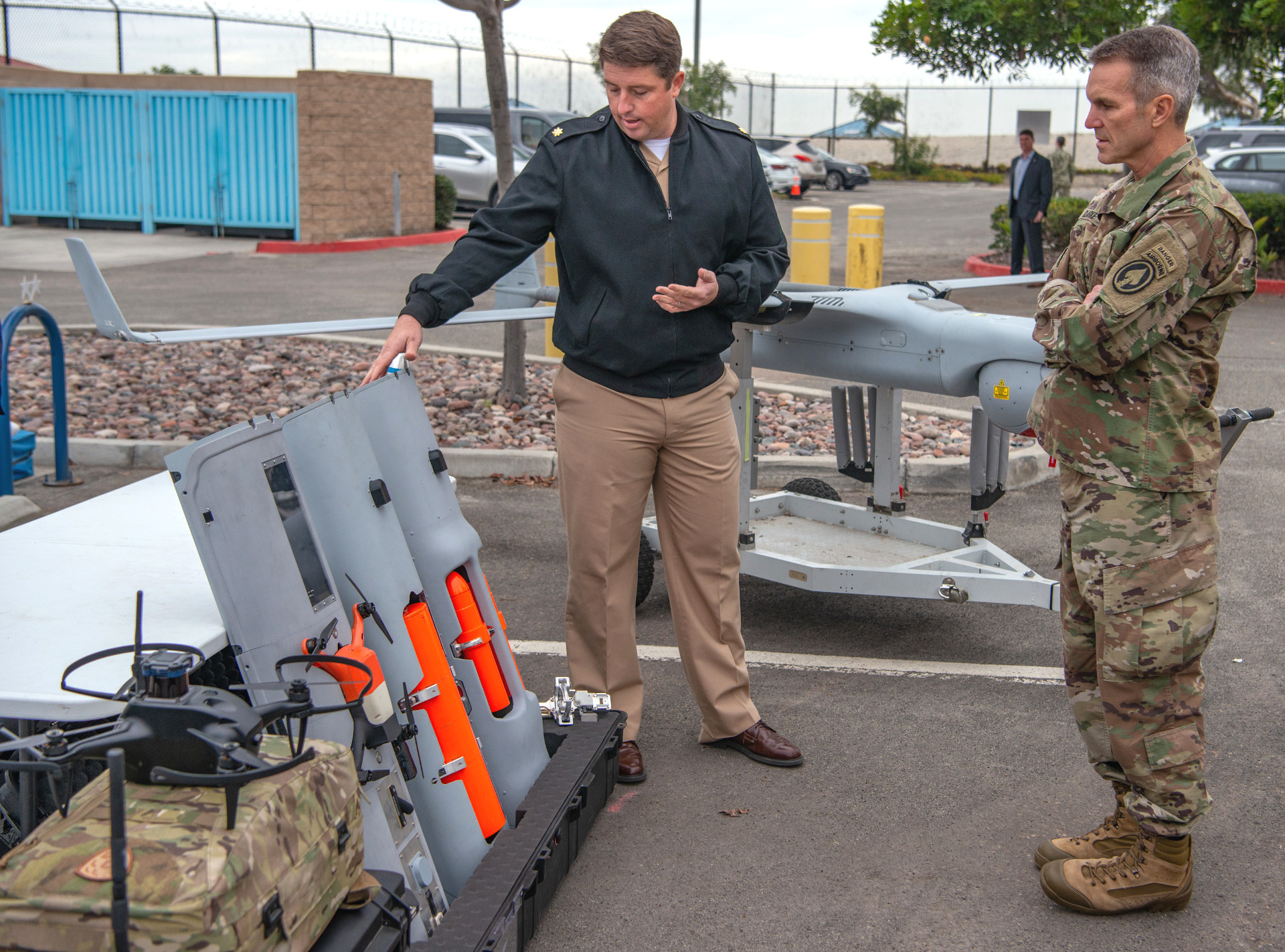
Within the U.S. military, both the Navy and Marine Corps operate RQ-21s, though the latter service is now in the process of divesting its entire fleet of these drones as part of a major overall of its entire force structure that you can read more about here. One of the Blackjack’s key features is the modular payload space in the center of its fuselage. Small wide-area motion imagery (WAMI) sensor systems, radars with imaging and ground moving target indicator (GMTI) functionality, and signal intelligence suites are among the payloads that are already known to be available for this unmanned aircraft. It also has a sensor turret with electro-optical and infrared cameras under its nose.

However, this appears to be the first look at this drone-launching module for the RQ-21, and it looks to be small enough to be installed on a Blackjack in combination with other payloads. In this case, there seems to be an optical sensor of some kind, which may be entirely unrelated, installed in front of the section holding the quadcopter.
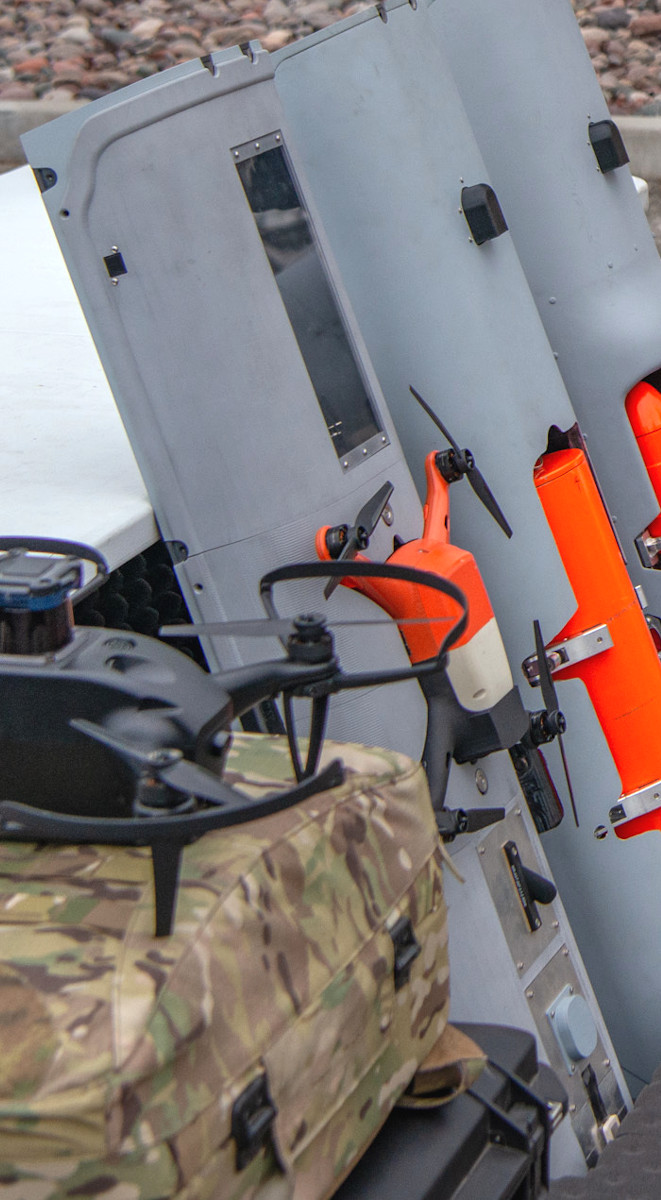
It is unclear whether or not this particular system can recover the smaller drone in flight after it completes its mission, but it seems unlikely from what we can see. The exact kinds of quadcopters it is designed to deploy are not immediately clear, but the one loaded onto it for the display certainly shares a general look of various commercially available types that are typically fitted with various types of small video cameras. It does appear to be smaller than the current generation ShieldAI Nova quadcopter, which is seen on display on a nearby table, has visual similarities to older Nova types. Nova-series quadcopters have been in use by Navy special operators for years now.
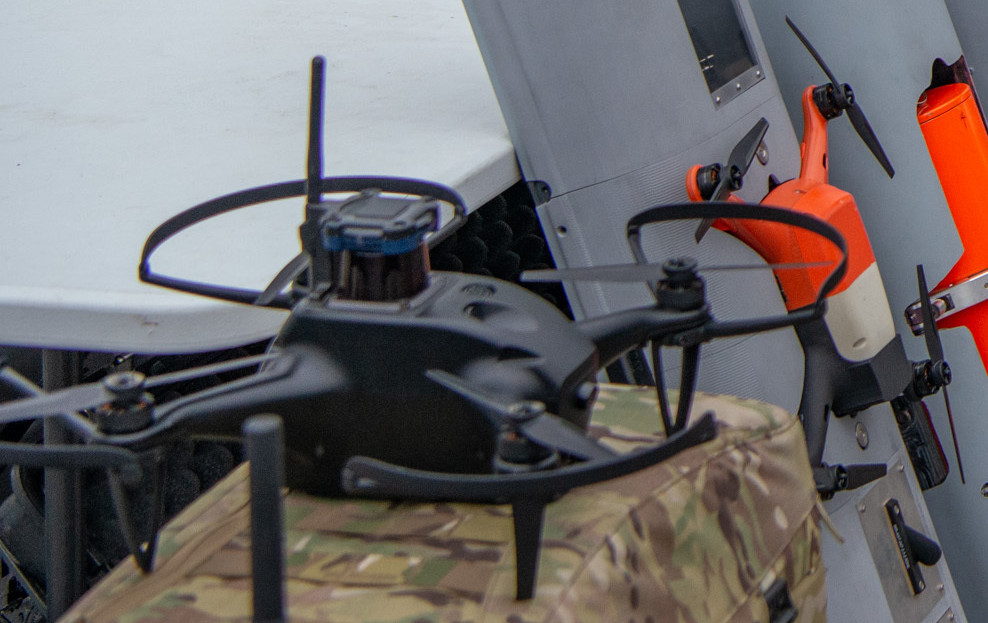
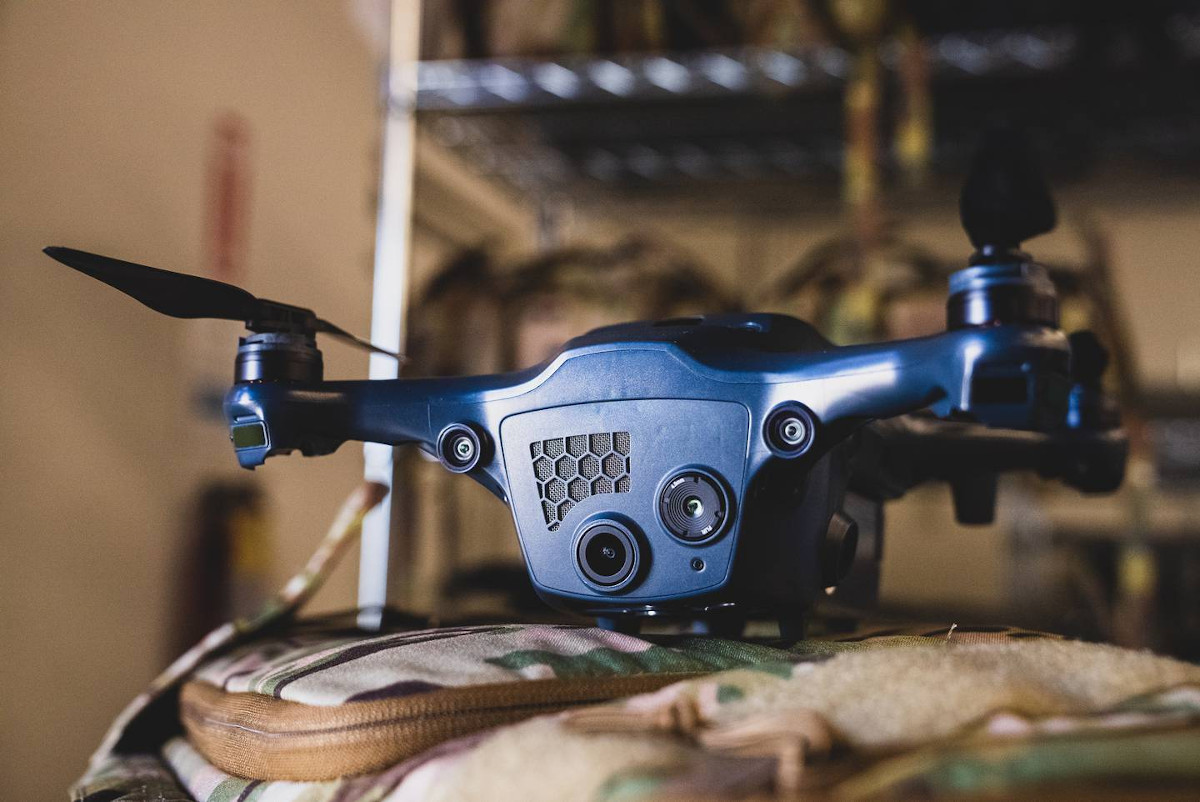
Regardless, an RQ-21 that is able to deploy its own smaller drone during a mission could open up a number of new operational possibilities. The most obvious would be a way to extend the reach of the Blackjack’s reconnaissance and surveillance capabilities, potentially in a very up-close-and-personal way. A video camera-carrying quadcopter deployed by an RQ-21 could swoop down for a closer peek at targets on the ground, maybe even look into a structure via a window and get a better sense of what’s going on inside.
It might be possible to configure the quadcopter that is seen fitted to the module in the picture, or others that the system might be able to deploy, to carry other kinds of payloads beyond cameras. However, the smaller drone’s overall size and its own power requirements for propulsion would limit its ability to carry things like radio relay nodes or electronic warfare packages capable of broadcasting their signals across a very long range, although they may be useful in a stand-in, high-localized manner. Another possibility could be the addition of a warhead, allowing it to act as a loitering munition, or “suicide drone,” but again, the warhead would have to be small.
Regardless, there is growing interest in what one might describe as ‘nested’ unmanned aircraft, larger types capable of launching and maybe even recovering smaller ones in flight, for many of these same reasons. As an example, earlier this year, L3Harris announced that it had partnered with ShieldAI to test its FVR-90, a vertical takeoff and landing capable drone that is similar in general size to the RQ-21, as an aerial launch platform for Nova-series quadcopters. The Navy has at least evaluated the FVR-90 for its own use, including from remote and austere locations, in the past.
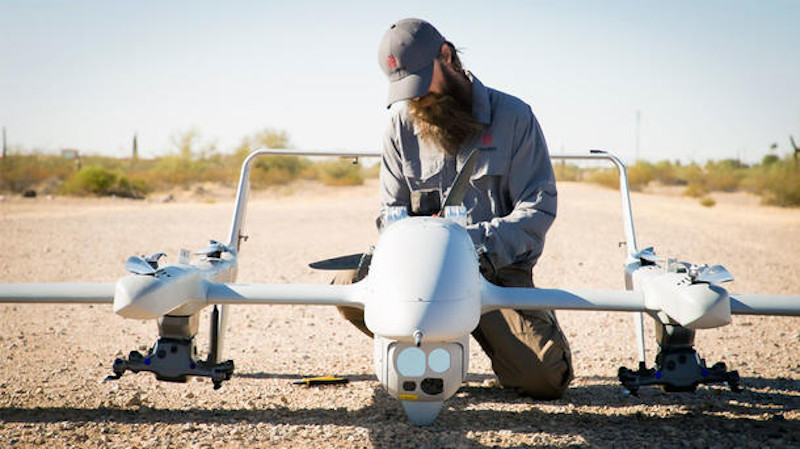
In addition, advances in artificial intelligence, machine learning, and other relevant technologies are set to give drones of various sizes ever-increasing autonomous capabilities, which could allow these entirely unmanned teams a greater ability to conduct various missions across broader areas on their own.
With this in mind, it’s interesting to note that David Breed, head of SOCOM’s Program Executive Office for Special Reconnaissance (PEO-Special Reconnaissance), said that “collaborative autonomous platforms” was one of three key areas of focus for his office during a media roundtable on the sidelines of this year’s Special Operations Forces Industry Conference (SOFIC) back in May. In U.S. military parlance, the term “special reconnaissance” refers to intelligence-gathering missions that take place in denied or otherwise sensitive areas.
Between 2020 and 2021, PEO-Special Reconnaissance took over responsibility for managing unmanned aircraft systems (UAS) in what the U.S. military refers to as Groups 1 through 3 across the U.S. military’s special operations community. These groups collectively include types like the RQ-21, with maximum weights under 1,320 pounds — and that are typically much lighter than that — as well as top speeds of under 250 knots and that cannot fly higher than 18,000 feet. Those drone programs had previously fallen under the purview of SOCOM’s Program Executive Office for Fixed Wing (PEO-FW) aircraft.
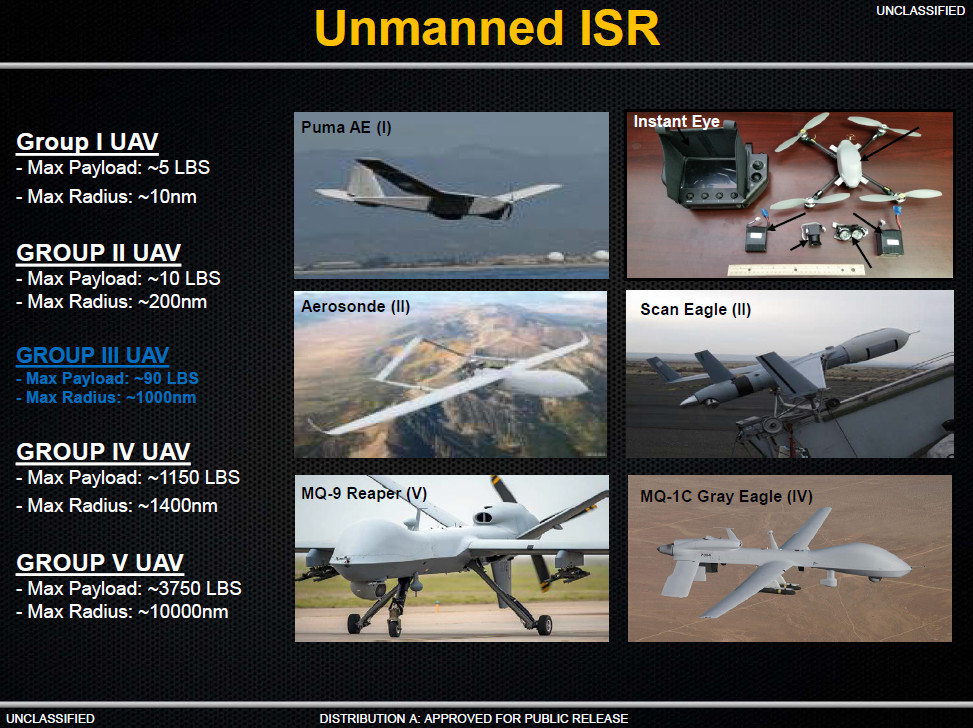
Breed’s comments at the media roundtable could also provide insight into the other expendable payload options for the RQ-21 that were on display during SOCOM chief Clarke’s visit to NSWC headquarters this month. At least as of May, another one of the three key areas of focus for PEO-Special Reconnaissance was advanced unattended ground sensors.
These kinds of sensors, which are often camouflaged in some way, have been in use to varying degrees by the U.S. military since the Vietnam War. They are most commonly associated with a then-cutting edge and controversial distributed sensor network that was employed during that conflict to try to keep tabs on North Vietnamese movements along the so-called Ho Chi Minh Trail, a collection of routes established to funnel personnel and material into South Vietnam via neighboring Laos and Cambodia. Similar sensors have been used with much less fanfare since then, with the general idea being that they offer a more discreet and less manpower-intensive way to monitor an opponent’s movements and other activities in certain areas, including behind enemy lines. Unfortunately, emplacing them in the first place can be a complicated proposition.
The video below shows a power drill-driven hoist-and-claw system tested by the U.S. Army in Afghanistan as a means to precisely deploy unattended ground sensors from helicopters in hard-to-reach areas without having to land.

“Yes, that’s absolutely a focus of effort for us now, or at least what we’re looking for – remote emplacement of sensors,” Breed said in response to a question from The War Zone during the media roundtable. “So, [we’re] looking at the smaller UAS platforms that are now within our portfolio and how do we deploy unattended ground sensors with those platforms.”
“There’s been some research and development in there, we’ve seen some demonstrations with different types of payloads and different types of sensors, but there’s nothing really in the production line yet. It is definitely an area of interest,” he continued. “Historically, we’ve had ease of access to places where we wanted to put sensors. Going forward, looking across the portfolio, we’d like to make sure that we can emplace those sensors in areas we don’t have that ease of access.”
A drone like the RQ-21 would certainly offer a potentially lower-risk and less detectable option for emplacing these sensors, especially in areas that are harder to reach physically or for other operational reasons.
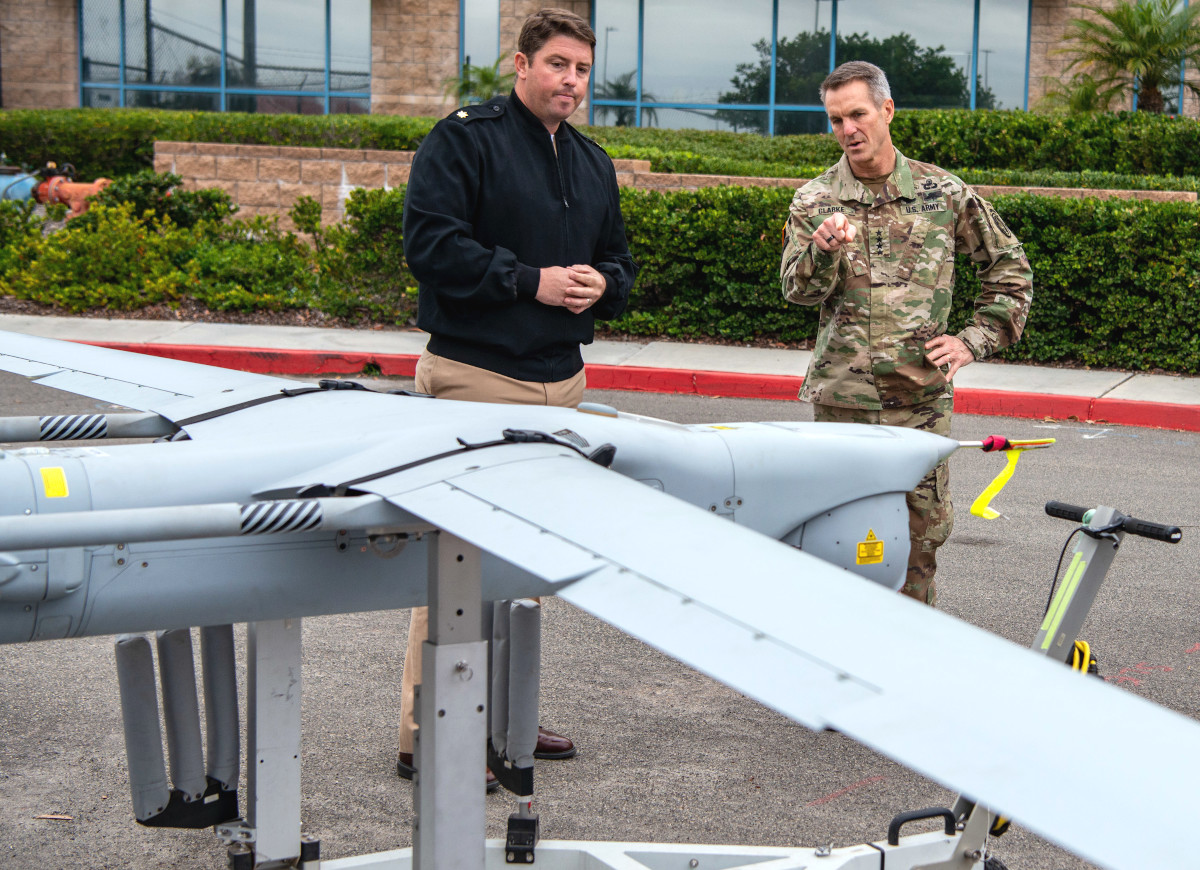
Of course, unattended ground sensors are just one expendable payload possibility. Expandable electronic warfare jammers, small munitions, and even bundles of psychological warfare leaflets are just some of the other potential options.
The U.S. military, as a whole, is increasingly interested in the idea of using smaller unmanned aircraft to conduct resupply missions, as well. While an RQ-21 might not be able to drop a large amount of cargo, they could be able to transport useful amounts of ammunition, medical supplies, spare parts, or other items to personnel in the field, even in the middle of firefight.
We don’t know if any of these payload modules are even in active service or if Naval Special Warfare Command is still testing them. What is clear is that the Navy’s special operations community is very interested in the future possibility of using the RQ-21 to deploy smaller drones and other payloads.
Contact the author: joe@thedrive.com
